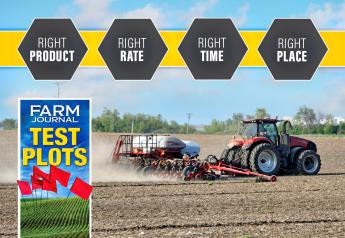Too Much Rain Impacts Ohio Crops
Large rain events seem to be trending this year in many parts of Ohio. These storms tend to last for a very short amount of time, but leave behind a large amount of water (2” or greater in many cases). This can lead to standing water (flood) conditions or waterlogged soils. In some localized areas, this may have resulted in partial and complete immersion of corn plants, especially in low spots and in river bottoms and along streams. Many crops are sensitive to excess water, but the amount of damage is typically driven by growth stage.
Waterlogged conditions from V4-V16 in corn can limit yield potential by reducing ear size, kernel rows per ear, and also potential kernels per row (Stevens et al., 1986). Silk development may also be negatively impacted, which could lead to poor pollination (Cárcova et al., 2003). Bacteria deposited in leaf whorls by flooding can also result in disease and kill plants. Additionally, nitrogen stress at the time of flooding can result in greater yield loss compared to fields with adequate nitrogen (Kaur et al. 2017; Ritter and Beer, 1969; Torbert et al., 1993). While some yield loss (https://agcrops.osu.edu/newsletter/corn-newsletter/2017-21/wind-damage-c...).
Alternatively, soybeans tend to be more sensitive to flooding stress during the reproductive stages rather than during vegetative stages. Flooding up to 4 days may not impact seed yield if it occurs during the vegetative (V4-5) stages (Rhine et al., 2010; Scott et al., 1989). A flood duration of 7 days or more can decrease yield by 17 to 63% in soybeans if it occurs during the vegetative stages (Oosterhuis et al., 1990; Scott et al., 1989). However, a flood duration of 4 days or greater during reproductive stages (R2-R5) can result in significant yield loss (25-85%). Additionally, there is a wide range in varietal tolerance to flooding for soybeans (Oosterhuis et al., 1990; Scott et al., 1989; VanToai et al., 1994) so every variety may not be impacted the same.
Forages can also be impacted by heavy rainfall events and the degree of injury is dependent on species, environmental factors, and when the crop was last harvested. Alfalfa is particularly sensitive to waterlogging injury, especially under high light conditions (Barta and Sulc, 2002). Waterlogging reduces root growth and has many negative effects on the physiology of alfalfa. Additionally, damage from flooding can be most severe if it occurs shortly after cutting (Barta, 1988; Barta and Sulc, 2002). Harvesting alfalfa 2 and 12 days prior to soil flooding reduced regrowth yield 56 and 33%, respectively. Unharvested plants were not injured with flooding duration up to 14 days. Be aware of these interactions and allow extra recovery time if alfalfa was waterlogged soon after cutting. Fields that were waterlogged should also be protected from potato leafhopper injury, to prevent insult to injury. Also, be sure to delay forage harvesting operations until soils are firm enough to avoid permanent crown damage and stand loss that will plague you for the remaining life of the stand.







